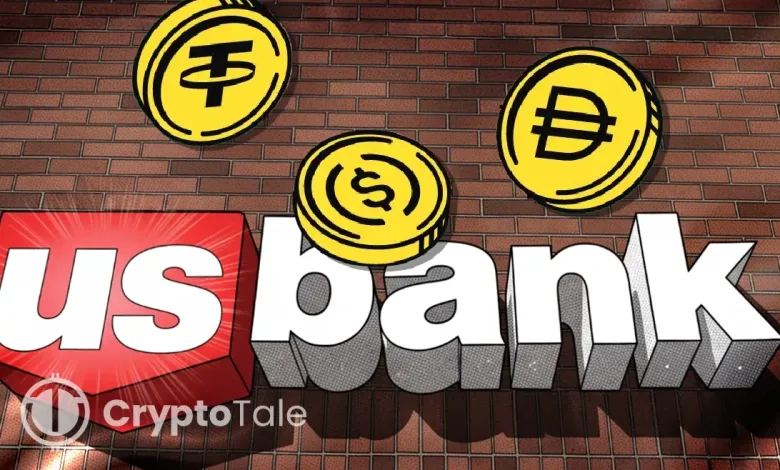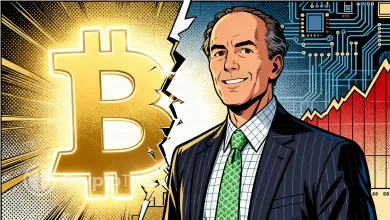U.S. Bank to Hold Anchorage Digital Stablecoin Reserves

- U.S. Bank will manage Anchorage Digital stablecoin reserves under federal oversight.
- The GENIUS Act supports the secure growth of stablecoins backed by liquid assets.
- Anchorage and U.S. Bank link regulated banking with trusted digital asset custody.
U.S. Bank announced that it has been selected to provide custody services for the reserves backing Anchorage Digital Bank’s payment stablecoins. The partnership signals a growing connection between traditional banking and regulated digital assets. Anchorage Digital Bank remains the only crypto-native bank in the United States to hold a federal charter under the Office of the Comptroller of the Currency. The collaboration introduces a regulated framework designed to ensure secure custody of assets supporting payment stablecoins, aligning with the standards of the GENIUS Act.
Strengthening Trust in Stablecoin Infrastructure
U.S. Bank is among the largest global custodians, operating in nearly 100 financial markets worldwide. Its clients include institutional asset owners such as corporations, insurers, government agencies, and financial institutions. As of June 30, 2025, the bank’s Wealth, Corporate, Commercial, and Institutional Banking arm managed over $11.7 trillion in assets under custody and administration.
Stephen Philipson, Vice Chair of Wealth Management, Corporate, Commercial, and Institutional Banking at U.S. Bancorp, said the bank’s stability and custody expertise offer institutional assurance. He stated that U.S. Bank’s infrastructure could help accelerate the issuance of regulated digital products by ensuring strong reserve management.
The payment stablecoins offered by Anchorage Digital Bank will fully comply with the GENIUS Act. The enacted law requires one-to-one backing for all stablecoins with high-quality liquid assets and that they operate under very rigorous rules concerning money laundering and the Bank Secrecy Act. The system is meant to contribute to the transparency as well as safety in the stablecoin world.
There had been other big financial players coming into the market as well. Among others, BNY Mellon is already the custodian of Circle’s USDC and Ripple’s RLUSD stablecoin reserves, while Citigroup is also considering taking up a similar role in the management of digital currency reserves. The formation of these scenarios suggests that larger banks are gradually embracing the digitization of asset custody as part of their financial operations.
Regulatory and Institutional Vision of Anchorage
Anchorage Digital Bank, operating under OCC supervision, launched its stablecoin issuance platform in July 2025 following the GENIUS Act. This move was done to complement its strategy of consumer-friendly digital currency solutions that are compliant with the U.S. regulatory environment.
Nathan McCauley, CEO and co-founder of Anchorage Digital Bank, noted that the GENIUS Act had created the foundation for payment stablecoins to scale responsibly under U.S. oversight. He emphasized that Anchorage’s goal is to issue stablecoins that uphold the highest regulatory standards and deliver real utility for institutional users.
“As the digital asset market evolves, collaboration with established financial institutions will be crucial,” McCauley said. “Partnering with U.S. Bank reflects growing alignment between digital finance and the traditional financial system.”
Related: Ripple Seeks OCC Banking License with Trust Bank Application
Bridging Traditional Banking and Digital Finance
U.S. Bank’s partnership with Anchorage Digital Bank is a leap towards the fusion of digital and traditional finance. It shows that the regulated financial institutions are playing a major role in the process of making stablecoin issuance transparent and trustworthy.
By taking part, U.S. Bank has positioned itself among the foremost custodians of dollar-pegged stablecoins. This is a sign that the market is moving toward the protection of assets with an institutional-grade level. Anchorage’s being compliant with the federal banking regulations not only fortifies investor trust but also secures operational efficiency in a controlled setting.
Is it possible that the coalition of the federally chartered digital bank and the top U.S. custody bank can change the perception of trust in payment stablecoins forever?





